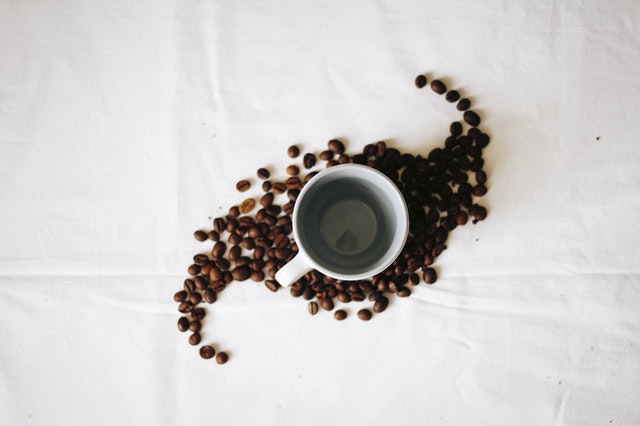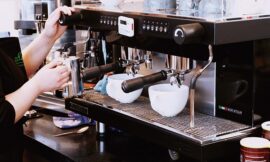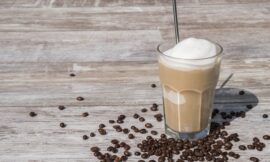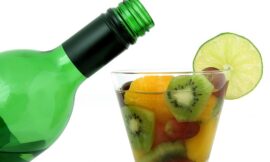How to Brew Coffee
The Fundamentals of Coffee Brewing
Coffee Brewing, Instructions on How to Brew Coffee
Whatever method you choose to brew your coffee, there are certain fundamental recommendations to follow that will help you produce excellent coffee every time.
1. Keep your coffee machine in good working order.
Although it seems to be a straightforward process, residue from both water and coffee may accumulate in your machine over time, detracting from the natural properties of the coffee. Because this typically occurs slowly, from pot to pot, it is difficult for you to perceive it happening. But it is possible, and it does happen on a regular basis.
2. Make use of pure, clear, and cold water that is devoid of pollutants.
Because coffee is composed 98 percent of water, the quality of your brew is greatly influenced by the quality of the water that you use to make it. In most circumstances, tap water that has been freshly drawn would suffice. If, on the other hand, you are dissatisfied with the quality of your water, you might try utilizing filtered or bottle water. Recall that the “harder” the water is, the stronger the resulting coffee will be. However, the “hardness” elements in water may add unusual or unwanted flavors to your coffee…not to mention that hard water can cause havoc on your coffee brewing equipment and is not recommended.
3. Purchase freshly brewed coffee and store it properly.
The elements of air, light, heat, and moisture are all enemies of coffee storage. Coffee pillow packs and filter packs, which are pre-packaged and ready to use, keep your coffee fresh until you’re ready to prepare it. They are effective in keeping out the air, the light, and the moisture. All that is required is that you keep your coffee at room temperature.
Whole bean coffee should be stored in a cold, dark, and dry environment. And ideally in an airtight container that is opaque to the light. For additional in-depth information on keeping your coffee beans, please refer to our tutorial on “how to store coffee.”
4. Make use of the appropriate quantity of ground coffee.
Everyone has a different idea of what constitutes the “proper quantity” of coffee. Coffee is made according to the golden rule, which is one gently rounded tablespoon of ground coffee for every six ounces of water. However, you should feel free to experiment. Start with around 1.50 ounces of coffee for a regular 12 cup pot of brew, and adjust the quantity as needed if you believe your coffee is too weak or too strong, as appropriate.
5. Brew at the appropriate temperature.
What temperature is best for brewing coffee depends on the sort of coffee you are preparing and how strong you want it. In order to make “normal coffee,” the recommended brewing temperature is between 195 and 200 degrees Fahrenheit (just below boiling). Under pressure and at a little higher temperature than regular coffee, espresso is produced.
6. Keep your coffee fresh even after it has been brewed.
Once the coffee is brewed, the flavor and fragrance of the coffee begin to fade. When coffee is exposed to air and heat, it degrades and develops a burnt (poor) flavor, which is undesirable. After approximately 15 minutes on the “burner,” you’ll notice a considerable difference in the quality of your freshly made coffee. To prevent this, pour your coffee into an airtight insulated carafe, thermos, or airpot as soon as it is finished brewing to keep it fresh. This will keep your coffee fresher for a longer amount of time and will aid in the retention of the heat from freshly made coffee (though it will still slowly cool off without an external heat source).
Which Coffee Brewing Method Is Right for You?
There are many different coffee brewing methods.
Drip Filtration: Drip Coffee Maker, Drip Filtration Coffee Brewer, Drip Coffee Brewing, Drip Filtration Coffee Maker, Drip Filtration Coffee Brewer, Drip Coffee Brewing
The drip technique of brewing coffee is by far the most popular way of making coffee. The premise is straightforward: hot water (nearly boiling) is poured or sprayed over powdered coffee, which is enclosed in a filter, and let to drip into some form of container.
When using an electronic automated drip machine, the water is sprayed evenly over the grounds. If using a manual drip machine, the hot water is poured evenly across the ground using a cone-shaped filtering funnel. The time you wish to brew coffee may even be programmed into certain automated drip coffeemakers so that you can wake up to coffee that has already been prepared for you. The drip method of brewing coffee is used by the great majority of coffee lovers as well as restaurants because it is effective and reliably produces a nice cup of coffee.
Keep in mind, however, that the coffee filter has a tendency to absorb some of the coffee’s oils, depriving your final brew of some of the tastes it was intended to have in it. Additionally, it is critical to select high-quality filters that have been oxygen whitened (rather than chemically bleached) in order to prevent tainting your coffee with a chemical flavor. Also, be certain that your coffee is ground coarsely enough to prevent clogging the pores of your filter (see “How to Grind Coffee”)
coffee percolator.
Percolators, which were popular in the 1950s because of their simplicity of use, were very popular. Percolator coffee has been less popular since then, mostly because the coffee produced by them is not very tasty. In fact, the percolator technique is often regarded as the worst possible method of brewing coffee. Why? A percolator is used because it reboils the coffee as it brews. The outcome of recirculating the coffee over the grounds over and over again is an exceedingly bitter brewed beverage. The optimal brewing temperature for coffee is surpassed when the coffee boils, which results in the good-tasting oils and flavors being replaced by bad-tasting oils and tastes.
Two chambers make up the percolator: the top chamber has the coffee grinds, which are placed on top of a filter of some type, and the bottom chamber, which contains the water and is located closest to the heat source. Percolators are quite easy to operate, even for beginners. Simply place some coarsely ground coffee in the top chamber of the percolator and fill the rest of the way with water. After that, position the percolator near a heat source. (usually a stove). The water in the bottom chamber boils and is pushed up to the top of the percolator via a tube, where it drips down over the coffee grounds and into the cup. This procedure is performed over and over again until the heat source is turned off and the percolated coffee is poured out.
Steeping (French Press, Unpressurized Infusion):
Steeping coffee is the most straightforward method of preparing it conceptually. Simply combine hot (nearly boiling) water and ground coffee, let the two to “get happy” together, and then strain the brew from the wasted coffee grounds to make a cup of coffee. The french press (also known as a press pot or plunge pot) is a coffee maker that only uses the steeping process.
According to many coffee experts, steeped coffee is the ideal technique to prepare coffee due to its distinct taste qualities and distinctive aroma. Steeped coffee tastes quite similar to drip coffee, with the exception that when metal screens are used to filter out the coffee grounds instead of paper filters, steeped coffee may be more intensely flavored. The chemistry of extraction differs somewhat between the steeping technique and the other methods. Because the coffee grounds come in touch with the hot water for a longer period of time, tastes that are difficult to extract are more concentrated in steeped coffee than in drip coffee. This hypothetical benefit, on the other hand, is very subjective, and your results may differ.
The primary disadvantage of this manual infusion technique is that the brewer is responsible for controlling the brew time. If you take too long to “plunge” the grounds out, you will end up with bitter coffee. If you rush things, you’ll end up with stale coffee. In any case, coarsely ground coffee should be used, otherwise your brew will be contaminated with coffee dust and colloids that have risen to the surface. If you get the coarseness and the brew time just perfect, you’ll have a fantastic technique to make coffee in no time.
Cowboy Coffee,
Cowboy coffee may be very good, although drip filtering or the steeping process are often preferred over this approach. Decoction (the process of boiling coffee to remove its flavor) has been around for millennia and may be the earliest way of extracting flavor from the beverage. Cowboy coffee received its name because cowboys used to prepare coffee in a pot over a campfire while on the journey, out of need. Here’s a traditional cowboy coffee recipe to get you started…
1. In a saucepan, bring one quart of water to a boil.
2. Pour in 3/4 cup of freshly ground coffee.
3. Bring the pot back to a boil.
4. Remove the pan from the heat and cover it immediately.
5. Wait until the earth begins to sink (about 5 minutes)
6. Remove the liquid from the grounds and serve it.
The use of vacuum filtration includes the use of a vacuum coffee pot and a vacuum coffee brewer.
The vacuum brewer is comprised of three parts: a lower chamber for serving, an upper chamber for extraction, and a filter. The lower chamber serves as the serving chamber. In order to provide a steam-tight seal between the upper and lower chambers, the apparatus is built with a filter in the center of the device. Even though the filter enables hot water to flow through, the small mesh size prevents coffee grounds from passing through.
Fill the bottom chamber halfway with cold water, then insert coarsely ground coffee in the top chamber to brew the coffee. Place the whole device over a heat source to finish it off (usually a flame or an electric hot plate). In response to the rising temperature of the water, near-boiling (ideal) water is forced up a tube, past the filter, and into the top chamber. The force of rising water collects hot water in the top chamber, allowing the coffee grounds to be extracted from the grounds.
As soon as the heat source is shut off, the lower chamber cools more quickly than the upper chamber, which results in the formation of a vacuum. This vacuum “sucks” the brewed coffee from the top chamber back into the lower chamber as ready-to-serve coffee, which is then removed from the bottom chamber. Although it is a bit time-consuming and theatrical, the vacuum filtering process produces excellent coffee results.
Espresso Brewing and Pressurized Infusion (Espresso)
Espresso is often made using very finely ground coffee and either a pump or a steam espresso machine to produce the beverage. A super-hot water or steam is fed into tightly packed espresso grounds under pressure in order to optimize extraction during the espresso making process. A little amount of hot water is allowed to stay in contact with the espresso grinds for a short period of time before the shot is “pulled” all at once into a demitasse cup of espresso.
The combination of finely ground coffee and the pressured infusion process results in a cup of coffee that is strongly flavored and has a lot of crema (foam that results from the pressurization). Adding steamed milk to espresso is a common practice to boost the richness of the coffee beverage. Pulling a perfect espresso shot may take a significant amount of time and effort. It is true that mastering the skill of brewing espresso may take years of training and expertise; in Italy, a Barista is often a well-trained elderly person who is well-respected by the locals.
READ MORE—–Health benefits and risks of drinking coffeeBecause of the coronavirus outbreak, many people’s plans to pick up a latte or cold brew on their way to work have been put on wait. However, Americans haven’t given up their love of coffee; they’re just preparing it themselves. Coffee consumption, which had already increased by 5% in the previous five years, has increased even more in the last month. According to data analytics firm IRI, sales of whole bean and ground coffee increased by 61% in mid-March compared to the same period previous year.
You may not know how to replicate the richness and taste of an excellent java shop coffee at home if you aren’t accustomed to making your own. If you have some additional time on your hands, you may want to try an alternative brew technique instead of depending on your coffee machine, but are frightened.
Well, it’s simpler than you think to make a great cup at home. We recruited the aid of two professional coffee tasters to conduct a tiny experiment to break down the stages to brewing the ideal cup of coffee using five different methods: aeropress, Chemex, French press, pour-over, and auto drip. Regardless of whatsoever method you choose, these pointers will help you elevate your home brew from average to exceptional.
Collect the necessary equipment
A barista is just as excellent as her beans and tools, just as a seasoned chef wouldn’t cook without top-notch supplies and equipment. You can make a passable cup of coffee without the devices and supplies listed below, but doing so can help you duplicate the coffee-shop experience at home.
• Purchase fresh and high-quality beans.
Following roasting and grinding, coffee beans quickly lose their taste and fragrance. Look for whole beans with a roasting date indicated on the packaging, preferably within the last few days, to improve the flavor and freshness of your coffee. (Roasting dates aren’t listed on the package of all coffees, but if they are, it’s typically a hint that the beans are of good quality.) The fresher the beans, in principle, the more recent the date.) When you’re ready to brew, don’t grind the beans. (For more information, see our purchasing guide and ratings for coffee.)
• Purchasing a burr grinder is a smart investment.
The size and form of the coffee grinds are important for a smooth, balanced cup. Burr grinders employ abrasive, cylindrical surfaces (burrs) to smash beans into a consistent grind size, while blade grinders use a helicopter action to generate uneven-sized grinds. Burr grinders also come with a variety of settings, allowing you to get the ideal uniformity for your brewing process. “Burr grinders are often more expensive than blade grinders,” says Amy Keating, R.D., a Consumer Reports nutritionist who oversaw our coffee testing, “but are worth the money if you want a more balanced brew, which may result in a nicer cup.” (For more information, see our reviews on coffee grinders.)
• Find out how hot the water is.
Brewing temperatures should be between 195° and 205° F for optimum flavor extraction. Make sure the water is hot enough by using a thermometer. Use filtered water as well, since contaminants in tap water might cause your coffee to have unpleasant tastes.
• Weigh your coffee,
as well as the water you’re going to drink. When brewing, a gram scale can help you measure the exact quantity of coffee and water needed to achieve the ideal ratio.
• Keep track of how long you have.
To ensure that you don’t over- or under-extract the flavors from the coffee grinds, use a kitchen timer (or the timer on your smartphone).
5 brewers of coffee
Consumer Reports is a publication that provides information to consumers.
Select a Brewing Technique
There is no one-size-fits-all approach to coffee brewing. In reality, you’ll most likely have to experiment with each of these ways to discover the one that suits your preferences best. However, if you follow the instructions below, which were created by our experienced tasters using Colombian coffees, you’ll always end up with a tasty, high-quality cup. Note that each technique might provide a different-tasting brew, so consult our tasting notes to choose the method that best meets your taste preferences.
Aeropress Tasting Notes:
This coffee is rather complex, with an excellent body and fragrance.
The Benefits and Drawbacks When you need a single-serving cup in a hurry but don’t want to sacrifice taste, this is the recipe for you. It’s simple to use and clean, and it makes coffee that’s more complicated than drip, but not quite as complex as the other techniques.
To begin, finely grind the coffee beans.
2. Soak the rubber piston in water and place it approximately 14 inches into the brewing cylinder. Place the brewer on a gram scale by turning it upside down. The scale should be reset to zero.
3. Fill the cylinder with 17 g of coffee. The scale should be reset to zero.
4. Slowly pour 250 g of hot filtered water (205° F) into the mixture.
5. Allow 1 minute and 15 seconds for the tea to steep.
6. Place the paper filter in the filter holder, saturate it with hot water, and secure it.
7. Place a cup on top of the brewer and flip it over. Gently press down on the brewing cylinder with consistent pressure until no more water can be pushed through.
Chemex Tasting Notes:
This brew is complex, fragrant, and balanced, with sweet, fruity overtones.
The Benefits and Drawbacks The thick Chemex-branded filters keep particles out while controlling the filtration rate. Although the carafe is simple to pour, cleaning it by hand is difficult because to the short neck. The wooden handle cannot be put in the dishwasher, however it may be simply removed.
1. Medium-finely grind coffee beans.
2. Fill the jug with hot water and place the paper filter inside. Excess water should be removed.
3. Set the gram scale in the Chemex. The scale should be reset to zero.
4. Fill the filter halfway with 32 grams of ground coffee. The scale should be reset to zero.
5. Using a circular motion, pour 60-70 grams of hot filtered water (205° F) over the grounds. 45 seconds is the time limit.
6. Slowly pour the remaining water over the grinds in a circular motion until the total weight of the scale is 500 grams.
Water should drain between 3:30 and 4:15. If it takes longer, coarsen the grind; if it takes less time, finer the grind.
Flavorful and full-bodied, as described by the French Press.
The Benefits and Drawbacks This coffee preserves its natural oils without the use of a paper filter, giving it a more intense flavor. Although the mesh filter keeps most of the grounds out, fines (tiny, powdery coffee grounds) may remain in the brew, resulting in a sticky cup.
1. Coarsely grind the coffee beans
2. Place the gram scale next to the carafe. The scale should be reset to zero.
2. Fill the carafe with 35 g of coffee. The scale should be reset to zero.
3. Pour in 250 g of 205°F hot filtered water.
4. Stir for roughly 5 seconds with a metal spoon.
5. Pour 500 grams of water into the mixture.
6. Start a 4-minute timer. Stir after two minutes.
7. When the timer goes off at 4 minutes, softly push the plunger and pour into the cup.
Pour-Over Tasting Notes:
Full, juicy, sweet aromas with a smooth mouthfeel.
Advantages and disadvantages: This sort of brewer is simple to clean and takes up little room in your cabinet. You may also make coffee straight into your cup to reduce the number of dishes you have to clean.
1. Medium-finely grind coffee beans.
2. Place the brewing vessel on top of the cup or carafe, and insert the paper filter; saturate the filter with hot water. Excess water should be removed.
3. Place the gram scale next to the cup and brewing pot. The scale should be reset to zero.
4. Fill the filter with 32 g of ground coffee. The scale should be reset to zero.
5. Using a circular motion, pour 64 g of hot filtered water (205° F) over the coffee. Allow 40 seconds for the mixture to settle.
6. Slowly pour the remaining water over the grounds until the total weight of the scale reaches 500 grams.
Water should drain between 3:30 and 4:15. If it takes more time, coarsely ground the coffee; if it takes less time, finely grind it.
Auto-Drip Tasting Notes:
Having less control over your brew might result in a cup that is somewhat more tannic and complex than the other options. Auto-drip, on the other hand, is an excellent option if convenience trumps perfection.
The Benefits and Drawbacks Auto-drip coffee makers are popular since they are simple to operate and clean, as well as brew coffee rapidly. The coffee’s fruity, somewhat sweeter aromas, however, were overshadowed by a stronger acidity, according to our experienced tasters.
1. Medium-finely grind coffee beans.
2. Place in filter basket and moisten with hot water if using a paper filter. Allow water to flow into the carafe and then discard.
3. Pour roughly 6 tablespoons ground coffee onto each filter to produce four 6-ounce cups. Fill water reservoir with 24 oz. filtered cold water. Start the game now.





